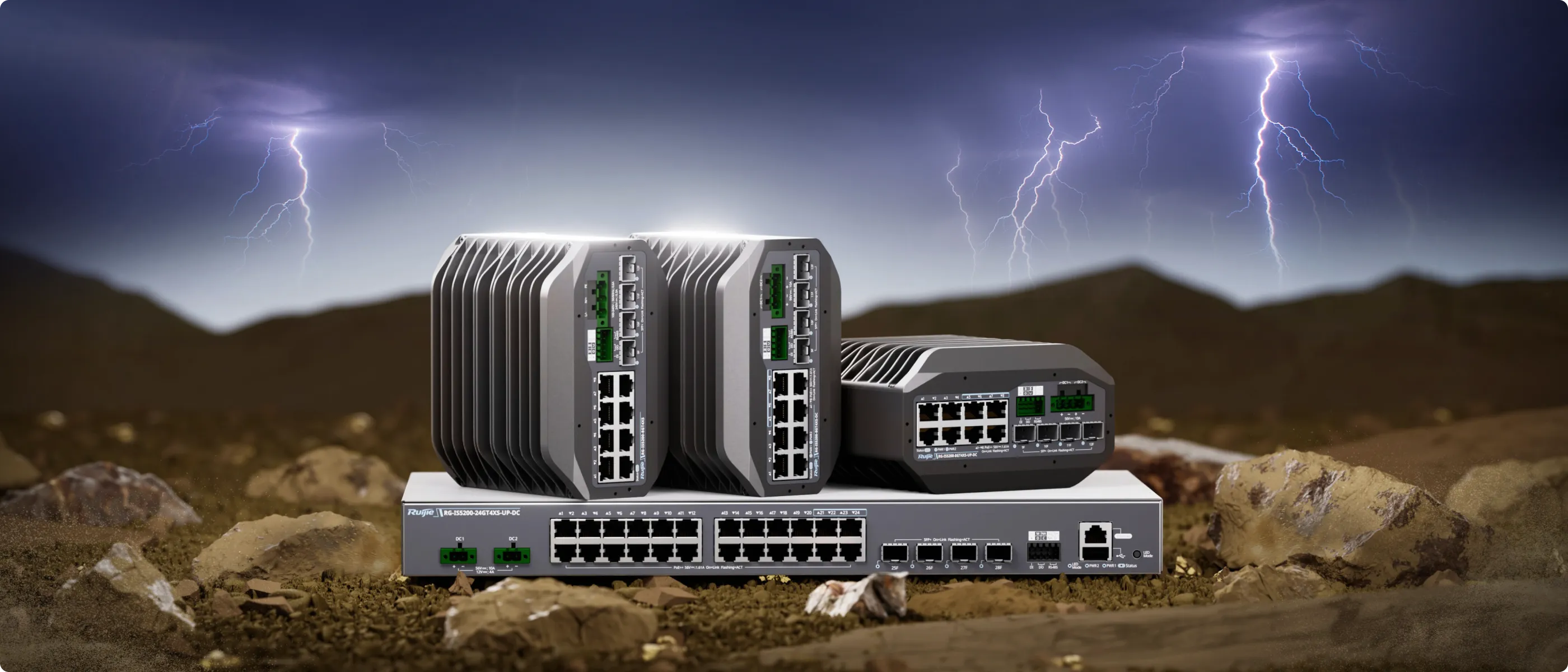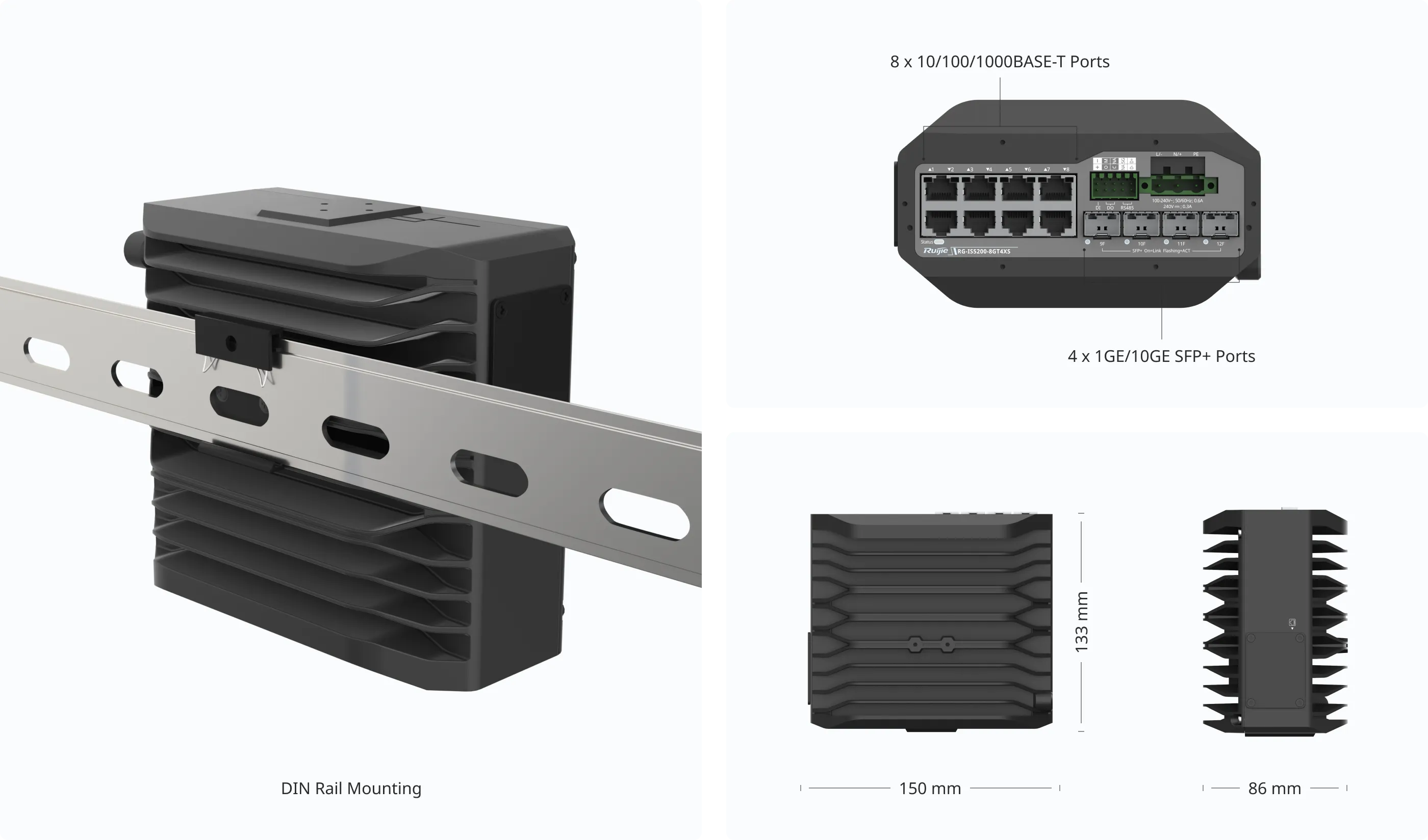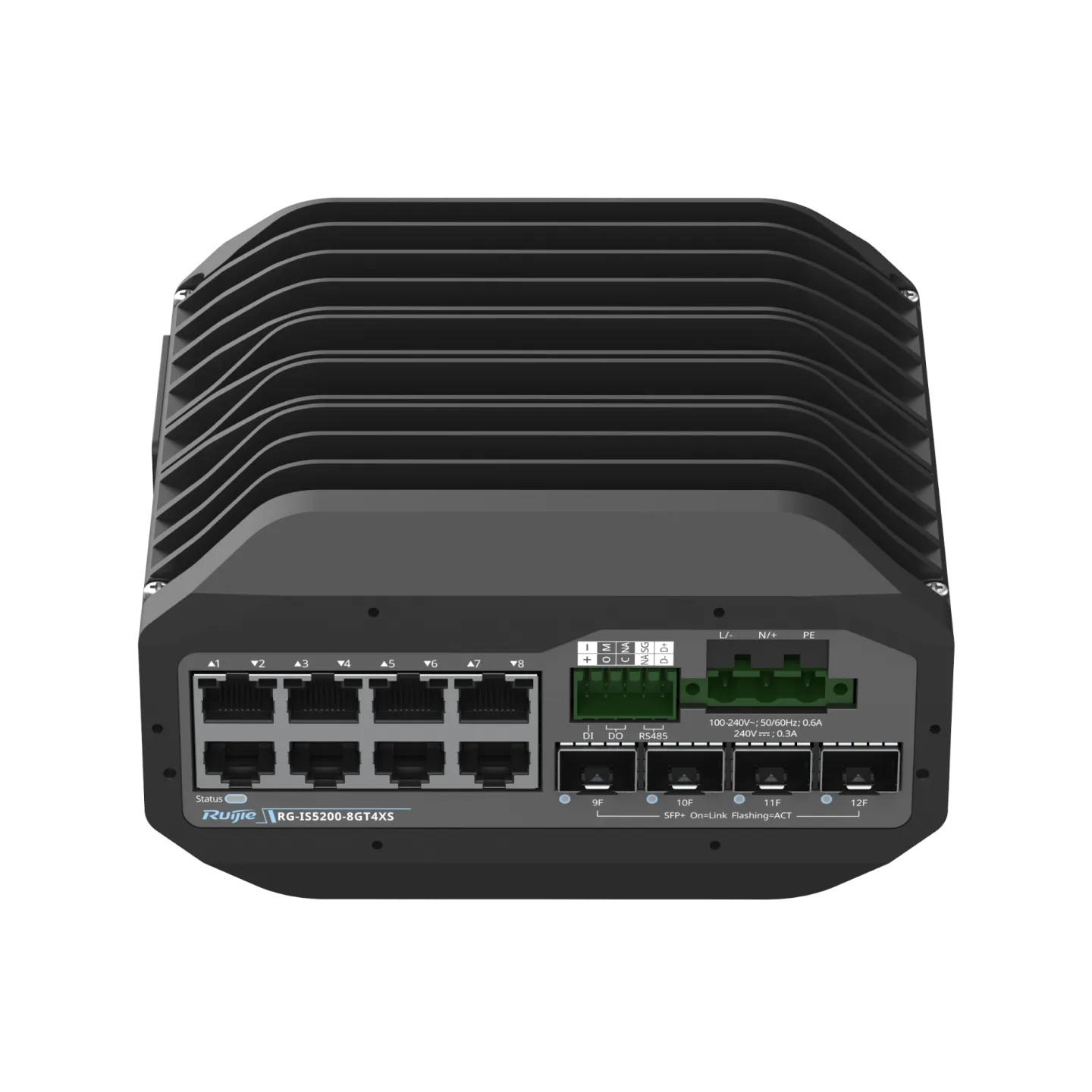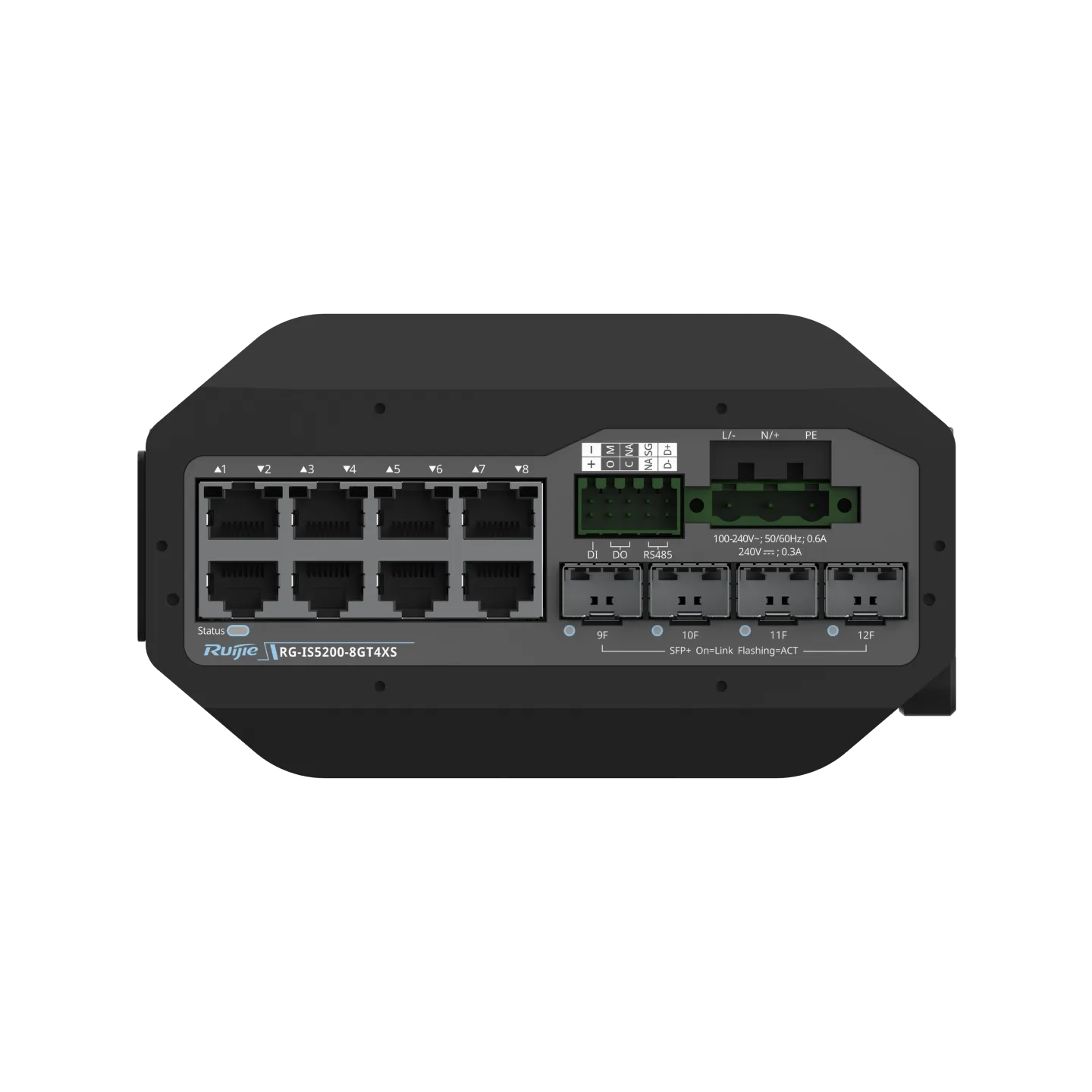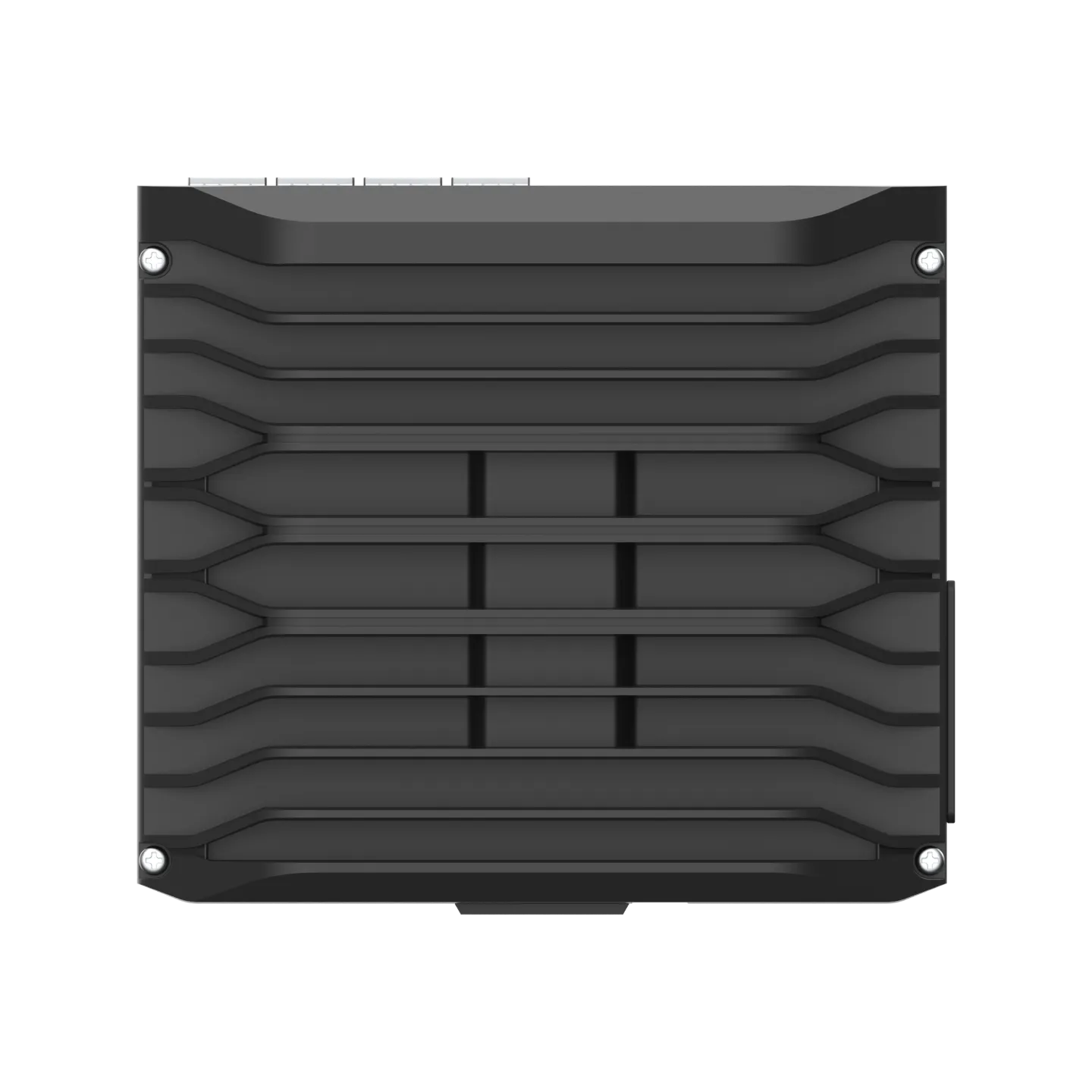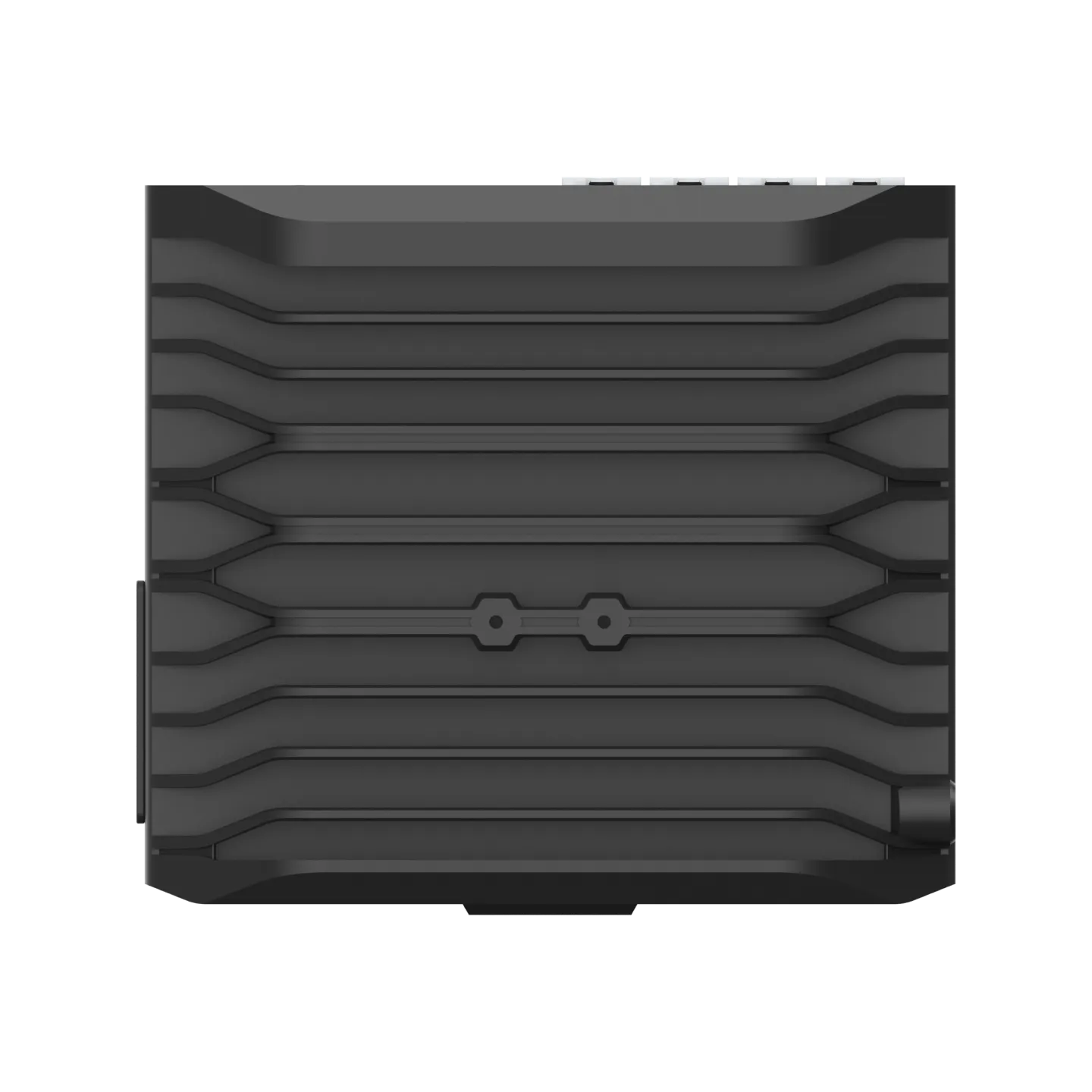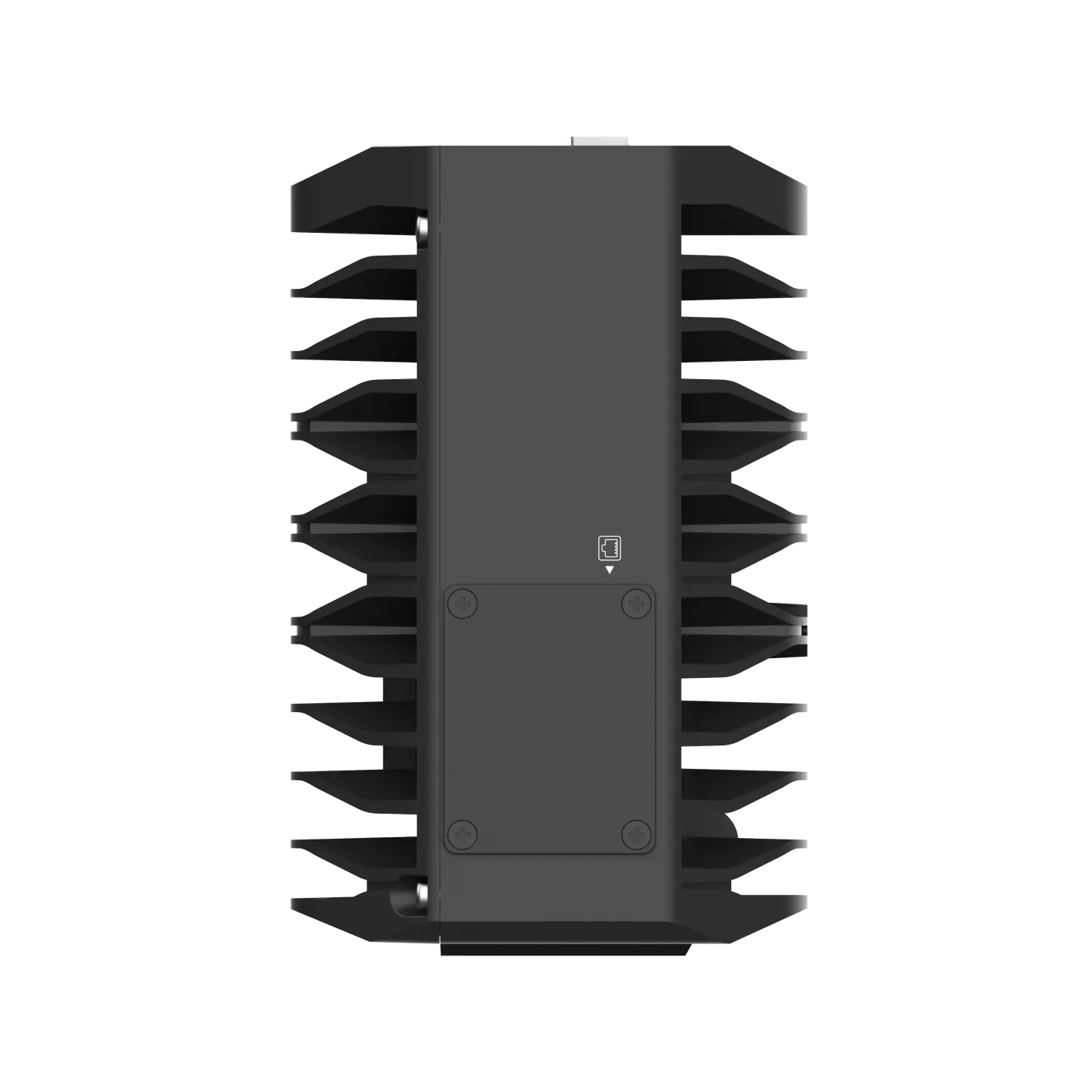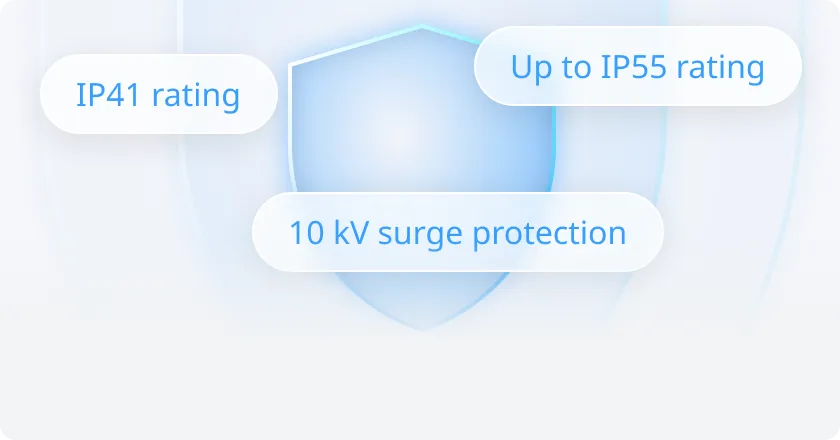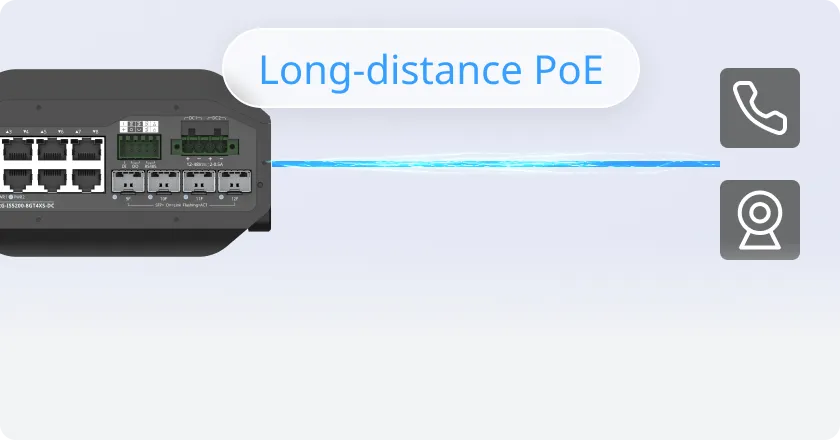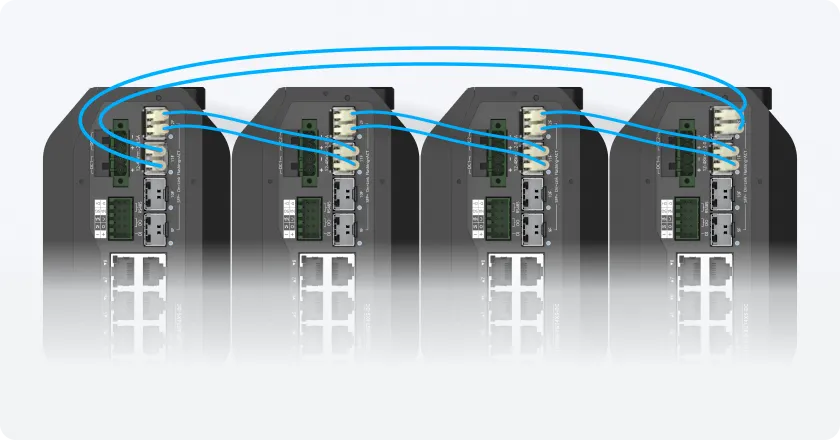| Operating temperature |
Operating temperature: (at an altitude below 1,800 m [5,905.51 ft.], with industrial optical transceivers installed) ● –40°C to +65°C (–40°F to +149°F) (installed in an enclosed cabinet) ● –40°C to +70°C (–40°F to +158°F) (installed in a ventilated cabinet with a minimum air velocity of 80 Line Feet Minute [LFM]) ● –40°C to +75°C (–40°F to +167°F) (installed in a fan-equipped cabinet with a minimum air velocity of 200 LFM) Note: At an altitude between 1,800 m (5,905.51 ft.) and 5,000 m (16,404.20 ft.), every time the altitude increases by 220 m (721.78 ft.), the maximum temperature decreases by 1°C (1.8°F). Storage temperature: –40°C to +85°C (–40℉ to +185℉) |
Operating temperature: (at an altitude below 1,800 m [5,905.51 ft.], with industrial optical transceivers installed) ● –40°C to +60°C (–40°F to +140°F) (installed in an enclosed cabinet) ● –40°C to +70°C (–40°F to +158°F) (installed in a ventilated cabinet with a minimum air velocity of 80 Line Feet Minute [LFM]) ● –40°C to +75°C (–40°F to +167°F) (installed in a fan-equipped cabinet with a minimum air velocity of 200 LFM) Note: At an altitude between 1,800 m (5,905.51 ft.) and 5,000 m (16,404.20 ft.), every time the altitude increases by 220 m (721.78 ft.), the maximum temperature decreases by 1°C (1.8°F). Storage temperature: –40°C to +85°C (–40℉ to +185℉) |
Operating temperature: (at an altitude below 1,800 m [5,905.51 ft.], with industrial optical transceivers installed) ● –40°C to +65°C (–40°F to +149°F) (installed in an enclosed cabinet) ● –40°C to +70°C (–40°F to +158°F) (installed in a ventilated cabinet with a minimum air velocity of 80 Line Feet Minute [LFM]) ● –40°C to +75°C (–40°F to +167°F) (installed in a fan-equipped cabinet with a minimum air velocity of 200 LFM) Note: At an altitude between 1,800 m (5,905.51 ft.) and 5,000 m (16,404.20 ft.), every time the altitude increases by 220 m (721.78 ft.), the maximum temperature decreases by 1°C (1.8°F). Storage temperature: –40°C to +85°C (–40℉ to +185℉) |
| IP rating |
IP41 by default. When the IS52-shield protection enclosure is installed, the IP rating reaches IP55. Note: Without any protection enclosure, the front panel of the switch should not be installed upward to meet the IP41 protection requirements. |
IP40 Note: For bare metal servers, the front panel port should not be installed upward to meet IP40 requirements. |
| Surge protection |
AC power port: Common mode: 6 kV/Differential mode: 6 kV, 1.2/50, criterion B Service ports: ● Common mode: 10 kV (1.2/50), criterion R ● Common mode: 6 kV (1.2/50), criterion B ● Differential mode: 500 V (between positive and negative ends, 1.2/50, criterion R) DI/DO/RS-485 port: ● Common mode: 4 kV (1.2/50), criterion B ● Differential mode: 1 kV (1.2/50), criterion B |
AC power port (power adapter): Common mode: 6 kV/Differential mode: 6 kV, 1.2/50, criterion B Service ports: ● Common mode: 10 kV (1.2/50), criterion R ● Common mode: 6 kV (1.2/50), criterion B ● Differential mode: 500 V (between positive and negative ends, 1.2/50, criterion R) DI/DO/RS-485 port: ● Common mode: 4 kV (1.2/50), criterion B ● Differential mode: 1 kV (1.2/50), criterion B |
| Voltage dip |
AC power port: ● 70% voltage remained for 25 cycles (criterion B). ● 0% voltage remained for 0.5 cycle (criterion B). ● 0% voltage remained for 1 cycle (criterion B). ● 0% voltage remained for 250 cycles (criterion C) |
AC power port (power adapter): ● 70% voltage remained for 25 cycles (criterion B). ● 0% voltage remained for 0.5 cycle (criterion B). ● 0% voltage remained for 1 cycle (criterion B). ● 0% voltage remained for 250 cycles (criterion C) |
